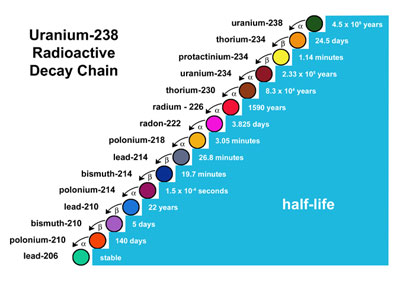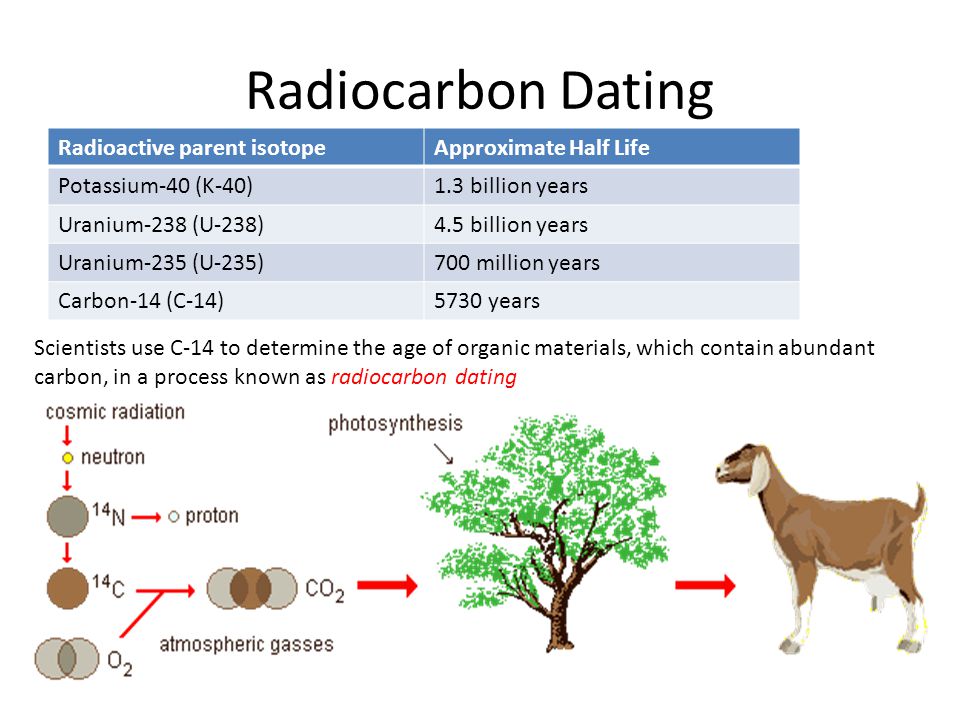- Radioactive Dating
- Uranium-Lead dating - CreationWiki, the encyclopedia of creation science
- Citing this material
- How are C-14 and U-238 dating used together in order to determine fossil ages?
- Navigation menu
Also most fossils no longer contain any Carbon.
Radioactive Dating
The fossilized remains have been mineralized where the original organic material has been replaced and turned into stones containing no carbon. Uranium has a half life of 4. Uranium can be used to date the age of the earth.
- User Comments.
- whats the best online dating site free!
- Keep Exploring Britannica;
- .
- dating chart funny;
This would be the estimated age of the earliest life or formation of fossils. Note no fossils contain Uranium Uranium is only found in igneous or volcanic rocks.
Uranium-Lead dating - CreationWiki, the encyclopedia of creation science
So no fossils can be dated directly using U Because of the huge differences in the half lives of Carbon 14 and Uranium they cannot be used together. Carbon 14 can only be used to date fossils of a very recent age. Uranium can only be used to date volcanic rocks of a very old age. How are C and U dating used together in order to determine fossil ages?
Citing this material
Carbon 14 and Uranium are not used together to determine fossil ages. This effect is referred to as discordance and is demonstrated in Figure 1. If a series of zircon samples has lost different amounts of lead, the samples generate a discordant line.
The upper intercept of the concordia and the discordia line will reflect the original age of formation, while the lower intercept will reflect the age of the event that led to open system behavior and therefore the lead loss; although there has been some disagreement regarding the meaning of the lower intercept ages. Zircon is very chemically inert and resistant to mechanical weathering—a mixed blessing for geochronologists, as zones or even whole crystals can survive melting of their parent rock with their original uranium-lead age intact.

Zircon crystals with prolonged and complex histories can thus contain zones of dramatically different ages usually, with the oldest and youngest zones forming the core and rim, respectively, of the crystal , and thus are said to demonstrate inherited characteristics. Unraveling such complications which, depending on their maximum lead-retention temperature, can also exist within other minerals generally requires in situ micro-beam analysis via, say, ion microprobe SIMS or laser ICP-MS.
From Wikipedia, the free encyclopedia. The disintegration products of uranium: American Journal of Science Retrieved 7 January Alpha-recoil in U-Pb geochronology: Effective sample size matters.
How are C-14 and U-238 dating used together in order to determine fossil ages?
Contributions to Mineralogy and Petrology , 4: Combined annealing and multi-step dissolution analysis for Improved precision and accuracy of zircon ages. Radiogenic Isotope Geology 2nd ed. Canon of Kings Lists of kings Limmu. Chinese Japanese Korean Vietnamese. Lunisolar Solar Lunar Astronomical year numbering.
Navigation menu
Deep time Geological history of Earth Geological time units. Chronostratigraphy Geochronology Isotope geochemistry Law of superposition Luminescence dating Samarium—neodymium dating.
Amino acid racemisation Archaeomagnetic dating Dendrochronology Ice core Incremental dating Lichenometry Paleomagnetism Radiometric dating Radiocarbon Uranium—lead Potassium—argon Tephrochronology Luminescence dating Thermoluminescence dating. Fluorine absorption Nitrogen dating Obsidian hydration Seriation Stratigraphy.
Retrieved from " https: Wikipedia articles needing clarification from October Views Read Edit View history. This page was last edited on 16 January , at By using this site, you agree to the Terms of Use and Privacy Policy.
